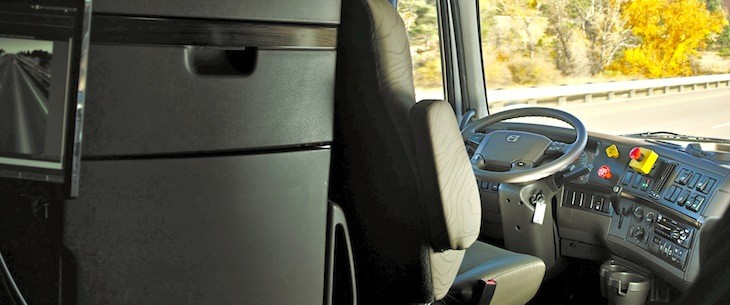Trucking technology providers tout driver safety impact of their systems
by January 4, 2018 2:15 pm 433 views

Automated technology in trucking and the data gathered from them can help reduce crashes and save lives, technology providers said. The providers recently discussed benefits of the technology in a recent webinar hosted by Transport Topics, a publication of American Trucking Associations.
Pete Allen, chief client officer for MiX Telematics, said the technology solutions provider has systems allowing for in-cab coaching of drivers. Chris Sluss, vice president of Seeing Machines, said it offers an in-cab sensor alerting drivers if they take their eyes from the road. Tom Leach, regional manager for Mobileye, said it’s the largest provider of collision avoidance systems, providing drivers up to three seconds to avoid a crash.
MiX Telematics offers a system that can use predictive analytics to determine risk based on data from driver behavior, such as if they are braking harshly, which is a potential indicator of a crash. Sluss said separate technologies working together can create an even greater impact on driver safety. The top cause of a crash is distraction, Leach said. “Technology is going to help correct this issue.”
In recent comments to a U.S. Senate panel, Chris Spear, president and CEO of American Trucking Associations, said human error is a factor in 94% of all vehicle crashes, and safety gains from automated vehicle technology could remove error and reduce fatalities and injuries on roadways, “which would reduce traffic congestion and pollution, providing additional economic and societal benefits,” Spear said. “This technology can also help to alleviate the truck driver shortage and prevent driver fatigue.”
Spear told the panel that the federal government must be a “catalyst for technology development and deployment. Actions that delay or otherwise impede this progress are shortsighted.”
Allen said carriers must determine which technology will work best for their fleets and to not “go out and purchase everything at once.” One solution is journey management, which allows carriers to prepare their drivers for a safe, achievable journey. In-cab cameras allow for video evidence of a crash and could detect fatigue or distracted driving.
“Having visual evidence is a key component of a safety strategy.”
The resistance to in-cab cameras can be mitigated by how fleets go about implementing the use of cameras. They might be more acceptable to drivers if carriers explain how they are going to be used and that they are “all about saving lives” and help drivers get home safely every day, Allen said.
“Education is key,” Sluss said. “It’s about keeping them alive.”
He explained if a loved one was riding along with a driver who was starting to fall asleep, that person would be expected to nudge the driver to wake up. “We’re just watching their face,” he said. “It’s not like big brother.” When the technology wakes them up one time, “they’re converted.”
Seeing Machines’ Guardian can detect when a driver’s eyes aren’t on the road. At 30 mph, drivers will receive an alert if there eyes are off the road for four seconds, Sluss said. The company has more than 150 customers and receives a lot of fatigue data.
“Every 360 miles a truck driver fatigue event happens.”
Sluss said a CEO told him “if I can measure it, I can manage it.” Data showed that with the system in place, it reduced fatigue events by 93.6%.
If a carrier were to turn off alerts, Allen said drivers revert back to normal driving styles without coaching.
“These technologies are trying to correct these habits,” Leach said.
He uses collision avoidance in his vehicle and didn’t realize how much he was tailgating others. “You don’t discount an alert that will potentially save your life.”
In the United States, 4,500 rear-end collisions happen daily, and early warning systems could prevent up to 90% of them, Leach said. In 40% of rear-end collisions, no brakes were applied for impact. Mobileye offers drivers real-time alerts to mitigate an impact.
Allen explained the systems could be integrated as carriers don’t want multiple systems they have to log into but one source. Leach said the company doesn’t do integration but is something that customers initiate. MiX Telematics offers a platform to bring data from other systems to one source. The company also compares data from its customers to determine the appropriate safety level in the industry and can use that data to anonymously help clients and coach them to where they should be, Allen said.
Safety isn’t exclusive to large carriers but also private fleets, such as the in the oil and gas and mining industries. Safety systems are used in most vehicles when they used to only be in luxury cars. Collision avoidance systems can be retrofitted into any vehicle, from light- and mid-duty trucks to Class 8 big rigs, the largest class, Leach said.
Allen said carriers should look to a technology provider that will help them solve issues that they need to solve. Find a provider who will explain the problem first before determining the solution.
